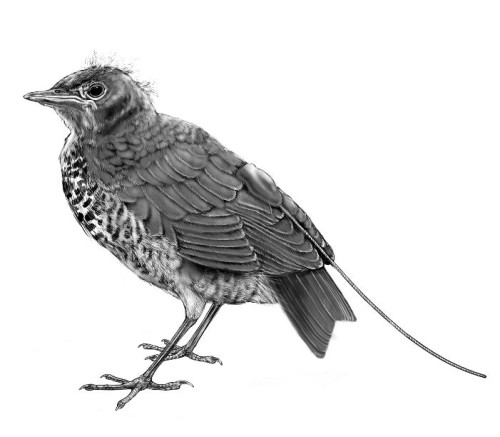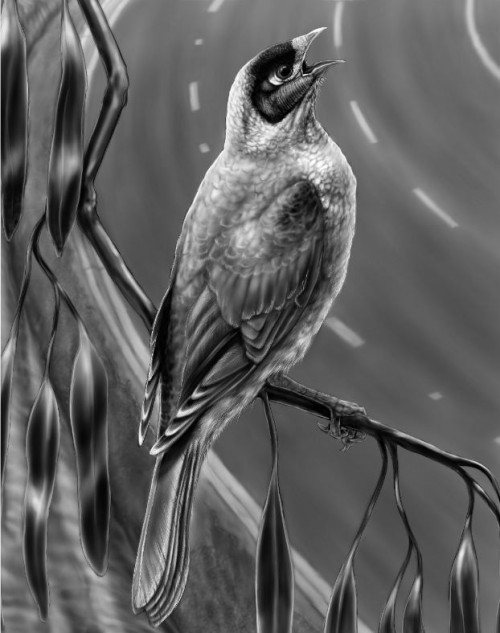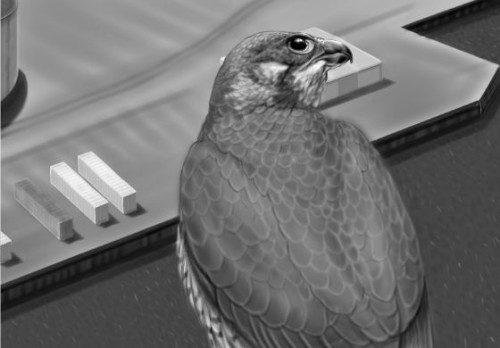Welcome to Subirdia: An Excerpt

As part of our “Nature in Writing” series, John Marzluff reads from Welcome to Subirdia: Sharing Our Neighborhoods with Wrens, Robins, Woodpeckers, and Other Wildlife, Friday, April 3rd, 7 pm, in the Readings Gallery at Village Books in Bellingham. Free!
by John Marzluff
My research and that of other urban ecologists suggest that, despite the great loss of biodiversity caused by our actions, we also have a lot to celebrate. I’ve spent most of my spring and summer mornings counting birds in national parks, industrial parks, and suburbs. It is not surprising that the most-heavily paved portions of the city hold few birds, but it is not the case that the least-disturbed places on Earth always hold the most birds. Wild reserves provide shelter for unique birds not found in the city, and they are absolutely essential. But the greatest variety of birds is often found in the suburbs. [1]
With my graduate students I have counted birds from Seattle’s urban core to its fringing forests nearly every spring and summer morning for the past decade. We expected the suburbs between the city center and the forested reserves to support an intermediate number of species, but when we listened as these neighborhoods awoke each morning, we were astonished by the dawn chorus of thrushes, tanagers, wrens, towhees, finches, crows, and woodpeckers. Here we often tallied 30 or more species in a single count. We found birds from the industrial city mixed with some from the protected forest, and we encountered a whole new set of birds that use more open country. [2]
 Black-throated gray warbler
Black-throated gray warbler
Compiling standard bird surveys from more than 100 locations in and around Seattle revealed to us a consistent, but unexpected, relationship between the intensity of development and bird diversity. The greatest diversity was not in the most forested setting. Instead, bird diversity rose quickly from the city center to the suburbs and then dropped again in the extensive forest that eases Seattle into the high Cascades.
We had discovered “subirdia.”
Human neighborhoods are good for birds because they offer a wide range of habitats in a small area. Lawns and trees are jumbled into savannahs, fields, and woodlots. Engineers provide new features such as small ponds that retain runoff from the many sealed surfaces. Where different habitats touch, they produce rich edges that offer access to many resources, such as nuts from trees, seeds from annual weeds, and insects from ponds. The diversity of plants found together in urban settings is simply incredible.
Our discovery of subirdia in Seattle is not unique. Throughout Britain, in deciduous woodlands of California and Ohio, grasslands of Arizona, forests of Japan, and shrublands of Australia moderate levels of urbanization also provide an abundance of various resources that increases the number of bird species beyond that found in either wilder or more densely populated settings.
 Noisy Miner from Australia
Noisy Miner from Australia
Subirdia is the place many of us call home or work. Physically, it is a richly interwoven mixture of residential, commercial, and wilder land. Houses, allotments and gardens, derelict and vacant land, golf courses and other outdoor sports sites, cemeteries, schoolyards, highway and railway verges, municipal utility stations, business parks and shopping centers occur among places dominated by natural vegetation such as greenways, river and stream corridors, parks and nature reserves, pipelines and powerlines, steep slopes, and quarries. In a variety of locales, natural vegetation constitutes one-third to two-thirds of subirdia. Functionally, subirdia is the confluence between city and country that promotes a mutual exchange of plants and animals. It is also a place where people from urban and rural cultures come together as neighbors, friends, and acquaintances. In so doing, we learn how varied is the human perception of nature. [3]
As our modification of the land combines birds into new communities, we create interactions that have never before been seen and rekindle others that played out long ago. The interactive strands that link subirdia’s birds into an ecological web are as varied as the myriad animals that reside there. Some strands in the web are deadly, but others are supportive. As we now more fully consider a variety of ecological interactions, we learn about each bird’s place in the web of life and begin to see ourselves in that web as well.
 Peregrine Falcon
Peregrine Falcon
Ten principles, what I like to think of as Nature’s Ten Commandments, can help us appreciate and sustain the birds and other wild animals that live among us. Embracing these commandments can guide your development of a land ethic that holds at its core an appreciation for the community, not just the commodity, of your property. [4]
- Do not covet your neighbor’s lawn. Land owners can increase bird use of their turf by reducing its extent, bordering it with shrubs, shading it with trees, mowing it less often, and skipping the fertilizers and pesticides. Providing shrubs and trees, especially native species, increases food resources. Thickets, brush piles, rocks, standing dead trees, and logs contribute cover from predators and safe nest and roost sites.
- Keep your cat indoors. Our favorite felines are called “house cats” for a reason…. Living inside extends the average cat’s life by a decade….Free-ranging cats kill one in ten wild birds.
- Make your windows more visible to birds that fly near them. Death by collision is the second most deadly and preventable force affecting urban birds. Obscuring as little as five percent of a window can help. Applying artistic etching, decorative frosting, or simple striping to large windows is particularly effective. You can also buy decals that reflect ultraviolet light, visible to birds but not humans.
- Do not light the night sky. Use light only when necessary and from as dim a source as possible. Bright bluish light is the most disruptive, soft yellow light the least. Face outside lighting downward, not skyward, and especially avoid illumination that shines horizontally.
- Provide food and nest boxes. By providing subsidies, we enable some species to enlarge their populations and absorb the inevitable losses they will suffer to cats, windows, cars, and pollution. Most birds that use feeders prefer black oil sunflower and white proso millet seed. Adding other types of feed to your yard—nectar for hummingbirds, thistle for finches and siskins, peanuts for nuthatches and tits, whole popcorn kernels for pigeons and doves, and suet for woodpeckers—will increase the diversity of birds you can attract. In urban settings, birds also benefit from the provision of nest boxes. But preserving dead trees, or even dead limbs on otherwise healthy trees, is the best way to ensure a steady supply of cavities for the species that require them.
- Do not kill native predators. Subirdia needs the natural checks and balances that predators such as hawks and owls provide, as they cull the diseased or weak and reduce the overly abundant. One of the easiest ways you can limit your effect is to exercise restraint in the application of pesticides. The toxins we use to control insects and rodents are deadly to small birds and mammals.
- Foster a diversity of habitats and natural variability within landscapes. A greater variety of birds would enrich our lives if developers and planners sought variety instead of dividing the land into regular and repetitive patterns defined by an oft-repeated grid or spiral of roads. Many native plants could be retained if [we] carved lots carefully from existing vegetation, rather than scraping entire lots bare and replanting them with a standard mix of nursery stock.
- Create safe passage across roads and highways. Creating ways for reptiles, amphibians, and mammals to safely cross our many roads increases biological diversity, which is good for subirdia. Enable natural grasslands and shrubs to fill in along the road network’s verges and medians, and take care to limit disturbance of these sites during nesting season, when roadside mowing could destroy nestlings and eggs.
- Ensure that there are functional connections between land and water. Connectivity among the green and blue spaces within a city is beneficial to birds and absolutely essential to the well-being of fish, reptiles, amphibians, mammals, and many of the insects on which they and we depend. These connections might include buffers along waterways, vegetated corridors, golf courses, or a series of small parks strung together along an abandoned transportation route, such as a “rails-to-trails” program.
- Enjoy and bond with nature where you live, work, and play! When humans live in the city and nature lives in distant reserves, nature becomes less relevant and more fearsome to people. This process has been called “environmental amnesia.” As we forget, we also devalue nature and lose a will to conserve it. To remember what biodiversity is and why it is important, we must conserve nature close to where we live and work as well as develop distant reserves. Including the urban ecosystem, and within it subirdia, in a broad conservation strategy can cure environmental amnesia.
[1] From preface
[2] p. 17-18
[3] p. 48-49
[4] from preface

